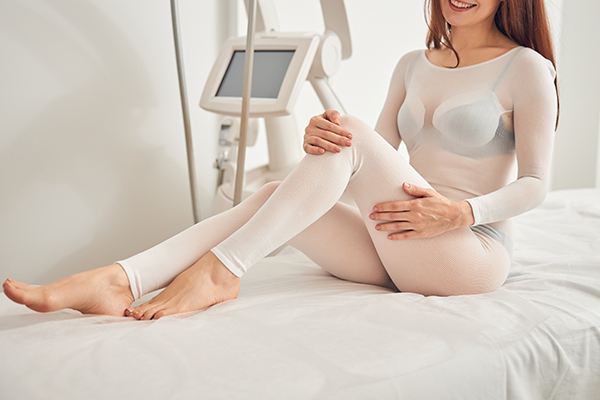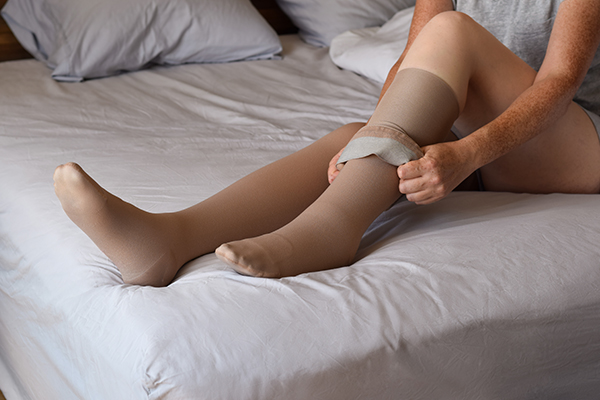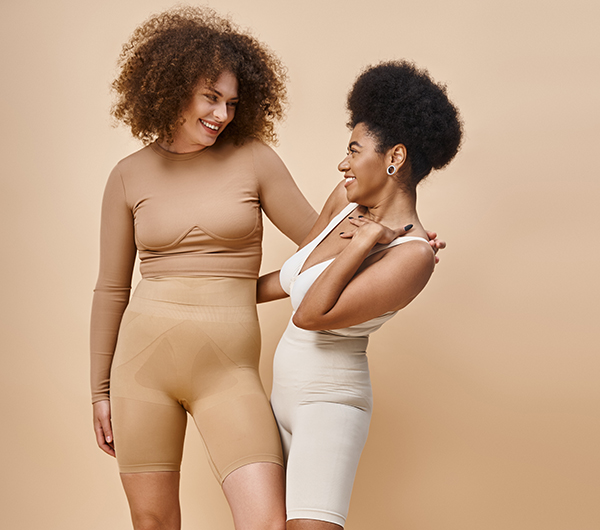

Why Compression After Plastic Surgery is Essential?
Plastic surgery is a reconstruction procedure for cosmetic or injury treatment. The post-surgical recovery phase is equally important as the treatment itself. Compression is an essential part of the recovery process after plastic surgery. Compression garments promote healing, improve surgical results, and reduce complications. In this article, we will explore the importance of compression after plastic surgery, how it works, and why doctors recommend it.
What Are Compression Garments?
Compression garments are specialized clothing items composed of elastic materials that apply uniform pressure to the treated areas following plastic surgery. They are available in various forms and sizes, making them suitable for liposuction, tummy tucks, BBL, breast augmentation, and facelifts.
Why Does Compression Therapy Work
Compression therapy maintains steady pressure on the surgery site, promotes tissue recovery, reduces edema, and avoids problems during the initial healing process. The constant pressure on the treated area manages blood circulation, enabling your body to heal while minimizing the risk of post-surgical complications.


Benefits of Post-Surgery Compression?
Post-surgical compression therapy has numerous benefits. Following are some of the most obvious benefits of compression.
Reduced Inflammation
Swelling and inflammation are the body’s natural response to the surgical procedure. Compression garments help reduce inflammation by increasing lymphatic drainage, reducing edema, and preventing the buildup of subcutaneous fluid, allowing the body to recover faster.
Enhanced Blood Circulation
Restricted blood circulation can result in the formation of blood clots, bruises, and slow healing. Compression garments promote normal blood flow, which helps provide oxygen and nutrients to the damaged tissues, accelerating recovery and lowering the risk of problems.
Reduced Bruising
Bruising occurs when blood leaks from tiny blood vessels injured during surgery. Wearing compression garments for prolonged periods provides constant pressure to reduce bruising and avoid excessive bleeding from blood vessel rupture.
Improved Skin Retraction
After contouring treatments like liposuction and tummy tucks, the skin has to retract to its new shape. Compression garments help in proper skin retraction by keeping the skin in place, minimizing sagging, and providing a smoother, more toned appearance.


Lesser Risk of Seroma Formation
A seroma is a fluid buildup when lymphatic fluid gathers in pockets beneath the skin after the operation. Compression garments reduce this risk by applying mild, consistent pressure, preventing excessive fluid collection.
Improved Comfort and Support
Compression garments increase comfort and support for the treated regions, minimizing pain and discomfort. They allow patients to move more freely, making daily activities less unpleasant during recovery.
Faster Healing
Compression clothes help in quick recovery by increasing blood circulation, minimizing swelling, and preventing problems. Patients can resume normal activities sooner with better postoperative results.
Preventing Keloids and Hypertrophic Scars
Some patients are more likely to have thick or elevated scars after the plastic surgery. Compression garments help flatten scars and limit their visibility by applying even pressure to the skin, avoiding scar formation.
Types of Plastic Surgery Requiring Compression Garments
Several types of plastic surgery procedures require post-operative compression therapy. The most common surgical procedures requiring compression are the following.


Liposuction
Compression is essential following liposuction to assist the skin in conforming to the altered body shape, preventing fluid buildup, and reducing edema.
Tummy Tucks (Abdominoplasty)
A belly tuck involves removing extra skin and strengthening the abdominal muscles. Compression garments support the treated area, promoting optimal healing and avoiding problems like seromas.
Breast Augmentation or Reduction
Compression garments support the breasts during augmentation or reduction surgery, lowering swelling, increasing comfort, and promoting better contouring.
Facelift and Necklift
Compression bands can help reduce bruising, edema, and fluid retention after facial surgeries, resulting in a smoother recovery and a more excellent definition of surgical outcomes.
Brazilian Buttlift (BBL)
Compression garments after a BBL serve to shape and maintain the newly transferred fat while minimizing fluid buildup and guaranteeing an even, contoured result.
Arm and Thigh Lift
Compression is required for body procedures targeting extra skin on the arms or thighs to shape the treated areas, reduce edema, and improve skin contraction.


How Long Should Compression Garments Be Worn?
The period of wearing compression garments varies according to the type of surgery, the surgical techniques used, and the surgeon’s advice. Generally, for the first 2-3 weeks, patients should wear the garment at all times, only taking it off to shower. During the next 3-6 weeks, you can wear your garment for at least 12 hours daily, depending on the healing process. After 6 weeks, some patients may continue to benefit from wearing compression to provide extra support, particularly during vigorous activity.
Selecting the Right Compression Garment
Your surgeon will recommend a compression garment depending on the needs of your treated area. To choose a suitable garment, keep the fabric, fit, coverage area, and other aspects in mind.
Breathable and Flexible Garment
A suitable compression garment should be breathable, flexible fabric that offers necessary support without being overly restrictive—fabrics like polyester and nylon work best. The fit should be snug but not too restrictive or tight to avoid pain or restricted circulation while maintaining constant pressure.
Coverage and Design
Different surgery types necessitate different clothing styles. For the best outcomes, ensure the compression garment provides complete coverage to the treatment area and applies uniform pressure.


Comfort and Adjustability
Choose garments with adjustable straps, zippers, etc., to make them easier to wear. A comfortable garment like a surgical compression bra will encourage you to wear it consistently, improving overall healing outcomes.
Myths About Compression
Compression Garments are Uncomfortable.
While it may take some time to adjust to wearing a compression garment, a well-fitted one should be comfortable and supportive, not uncomfortable.
Compression is Only for Liposuction Patients.
Post-surgery compression garments help people undergoing a variety of plastic operations, including liposuction and body contouring. They promote healing, minimize swelling, and improve surgical outcomes across many operations.
Wearing a Compression Garment for Longer than Recommended is Harmful.
While severe compression can be harmful, wearing a well-fitted garment for a lengthy period can benefit some patients, particularly those who heal slowly.
Any Tight Clothing Can Function as a Compression Garment.
Regular tight clothing does not deliver the organized and consistent pressure that medical-grade compression garments give. Investing in a high-quality, surgeon-recommended garment is critical for a successful recovery.

Why Compression After Plastic Surgery Is Essential?
Compression is essential for post-surgical recovery, providing many advantages, such as minimized swelling, improved blood circulation, fewer complications, and better surgical results. Following the recommendations of your board-certified plastic surgeon for compression can significantly affect your plastic surgery’s outcomes, providing a smooth and better recovery.
Feel Confident With Jim Brantner, M.D.
Are you considering cosmetic surgery to boost your confidence? Get in touch with Jim Brantner, M.D, a talented, board-certified plastic surgeon with decades of experience. Dr. Brantner provides a variety of reconstructive and cosmetic surgeries including facial rejuvenation, body lifts, tummy tucks, liposuction, skin care treatments, laser and light-based rejuvenation treatments, laser therapies, rhinoplasty, mommy makeovers, Botox, eyelid surgery, and more.
Call us now if you are looking for the best plastic or cosmetic surgeon in Johnson City, Tennessee!
What Our Paients Are Saying About Us..

I highly recommend Dr. Brantner to any woman that wants a breast augmentation. I'm very pleased with my results. they look amazing and feel wonderful. If I ever need anything done in the future, I will sure be back to see Dr. Brantner. Thank you so much for taking good care of me!

I had BR surgery 2months ago, I had the anchor procedure. I had absolutely no problems at all, no pain, very little swelling and the results are amazing, with the added bonus that my back , neck, and shoulders no longer hurt. Even at just 2months my scars are hardly noticeable. I would recommend Dr Brantner to anyone , he and his staff are wonderful . I could not have had a better experience.

Dr. Brantner and his associates are all amazing! They are very kind, smart, and honest people I highly recommend Dr. Brantner. They took great care of me and my needs from start to finish.

Dr. Brantner is a highly skilled surgeon. I am so happy that I decided to go to him. After being in a car accident my nasal bones and surrounding bones had to be reconstructed. The first surgeon who worked on me did a terrible job and had zero bedside manner. That is when I sought out Dr. Branner, he not only did an amazing job fixing everything the first Doctor messed up, he also made it look better than it did originally. I would highly recommend him to anyone.

friendly and he takes time to answer any questions I may have and was even so kind as to take a phone call from me and he alleviated all concerns in a kind, gentle manner. Dr. Brantner and his staff were absolutely fantastic!!!!!! They made me feel soooooo comfortable before and after surgery. I highly recommend him to anyone looking to have a breast reduction.
testimonials
I went to Dr Brantner for reconstruction revision. I'm very, very pleased with the results. The staff were wonderful. I can't thank them enough for taking care of my surgery and making me feel and look so much better!!! I would highly recommend Dr Brantner.
Great surgeon! Every employee in the office is wonderful and helpful. I have nothing but great things to say about Dr Brantner, Win, and all of the staff.
Talk to us



